Losing a limb is life-changing. But what comes next can shape your recovery more than anything else. One of the most important steps after an amputation is deciding when to get a prosthesis. Unfortunately, this decision is often delayed—not because of medical reasons, but because of fear, confusion, or myths that simply aren’t true.
Many people are told to “wait and heal” before thinking about a prosthetic. Others are warned it might be painful, expensive, or unnecessary early on. These ideas spread easily, and they can stop someone from getting the care they truly need, at the right time.
At Robobionics, we’ve worked with thousands of individuals across India and beyond, and we’ve seen how early prosthesis fitting can speed up healing, restore independence, and give people their confidence back sooner than they ever imagined. But to make that happen, we must first clear the air. We need to address the most common myths—and share the truth behind them.
Let’s begin by looking closely at these widespread misunderstandings, and uncover how early fitting really works, what it feels like, and why it’s often the smartest move in recovery.
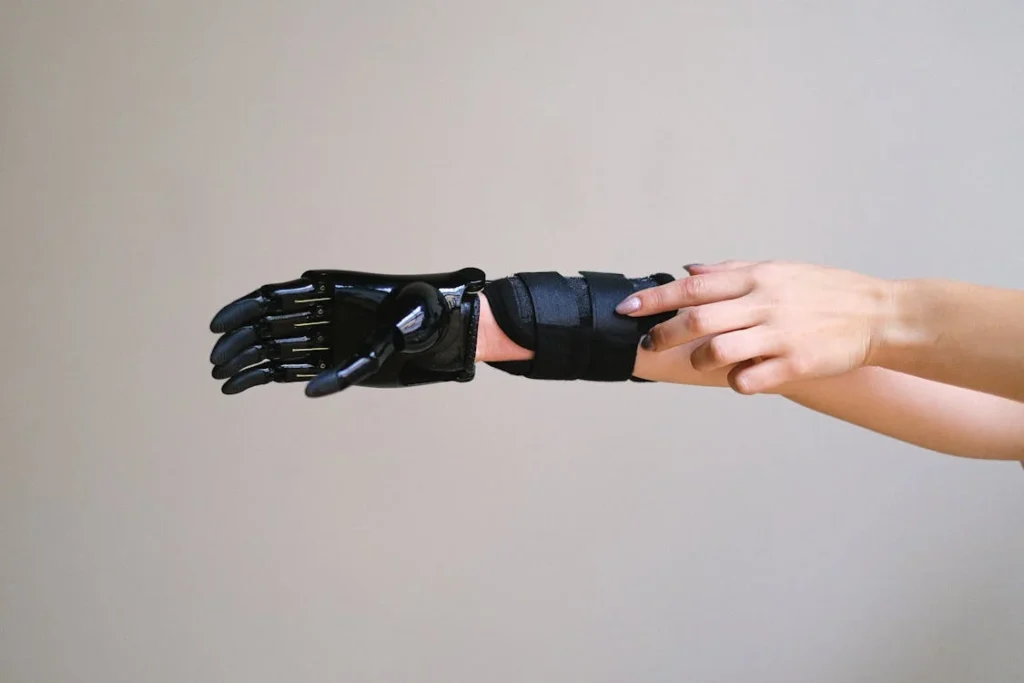
Myth #1: “You Should Wait Until Your Limb Fully Heals Before Getting a Prosthesis”
Why This Myth Persists
This is one of the most common beliefs people hear after surgery. It often comes from good intentions. Doctors, nurses, or family members may suggest focusing on healing first before introducing anything new. They worry that using a prosthesis too early might cause injury or discomfort. There’s also the fear of pressure on the wound or concern about swelling.
Because of this, patients are often told to wait weeks—or even months—before thinking about prosthetic options. They stay in recovery mode far longer than they need to, simply because they assume it’s the only safe path forward.
But here’s the truth: early fitting doesn’t mean rushing into things before your body is ready. It means starting when your body is ready—and that’s often sooner than people think.
What Early Fitting Really Means
Early prosthesis fitting doesn’t happen the day after surgery. It starts when your surgical site has closed and the skin is stable. This can be just a few weeks after the operation. At this stage, your limb is still changing shape, but that’s expected—and prosthetic devices today are designed to adjust with you.
Fitting a prosthesis early allows your muscles to stay active. It helps your body learn balance again. It also gets your mind used to using two limbs—something your brain naturally wants to do. Waiting too long can make this harder. Muscles weaken. Joints stiffen. Nerves become more sensitive. These issues can delay progress later on.
Early doesn’t mean unsafe. It means starting gently, with support, and with the right tools.
The Role of Shrinkers, Liners, and Temporary Devices
Before someone gets a full prosthetic limb, they often use preparatory tools. These include compression shrinkers, soft liners, and temporary sockets. These tools are part of the early fitting process. They shape the residual limb, reduce swelling, and prepare the body for a full prosthesis.
This stage is critical. It helps reduce phantom pain, improves circulation, and keeps tissues healthy. All of this adds up to a smoother transition when the permanent prosthesis is introduced.
In fact, when people use early-stage devices correctly, they often experience fewer complications later. They walk sooner. They gain strength faster. And they regain independence in their daily life far earlier than those who wait.
The Psychological Advantage of Early Use
There’s another part of this myth that isn’t often talked about—what waiting does to the mind. After amputation, it’s easy to feel like your body is “incomplete.” This can affect self-image, confidence, and motivation.
The longer someone goes without a prosthesis, the harder it can be to feel “normal” again. Daily tasks become harder. Routines are disrupted. People avoid social events, lose interest in activities, and feel more isolated.
Introducing a prosthesis early—especially one that looks and feels functional—can be a major emotional turning point. It gives people back their ability to move with ease, use both hands, or walk with balance. That small step builds momentum. It turns recovery into progress. And mentally, that’s everything.
We’ve seen patients who were once hesitant or afraid light up the moment they wear their first prosthetic device. It’s not just about standing or holding—it’s about becoming whole again.
Why Delaying Isn’t Always Safer
There’s a common idea that waiting longer makes everything “safer.” But that’s not always true. Prolonged immobility increases the risk of muscle atrophy, joint contractures, and skin breakdown. The body needs to move. It needs symmetry. And prosthetics help provide that.
People who delay prosthesis fitting for too long often require more physical therapy, more adjustments, and longer rehabilitation. Their journey back to daily life is slower, and their confidence takes more time to rebuild.
In contrast, early fitting allows the rehabilitation process to begin with structure. Therapists can train users with real tools. Doctors can monitor progress more precisely. And patients can move toward independence with each passing day.
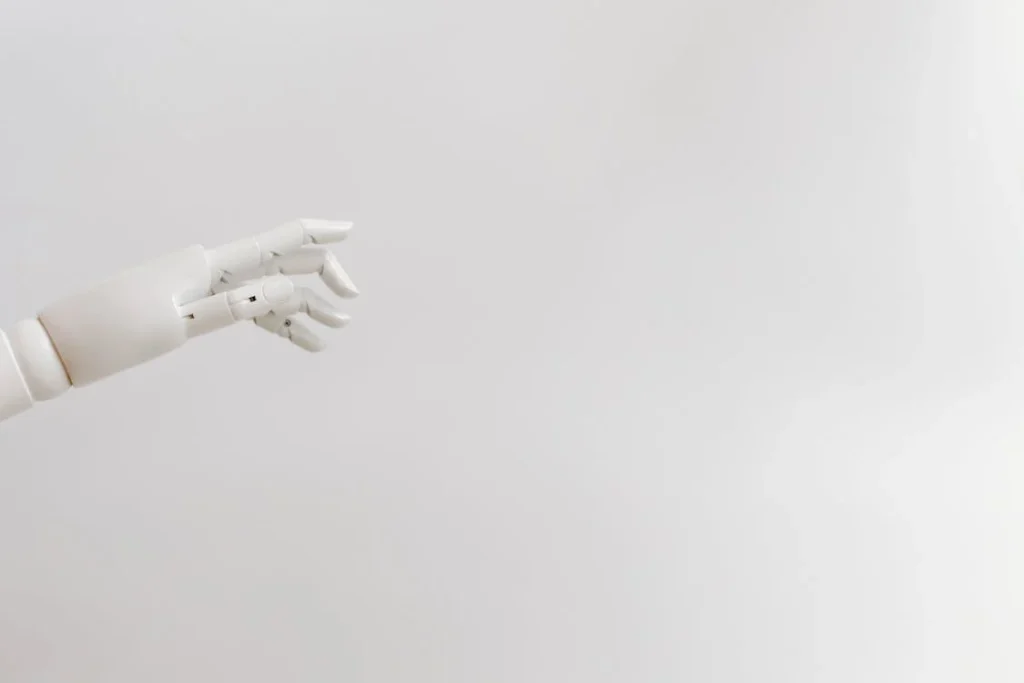
Myth #2: “Early Prosthetics Are Just Temporary and Not Worth the Investment”
Why This Belief Can Be Misleading
When someone hears the term “early prosthesis,” it often gets misunderstood. People think of it as a short-term fix—something basic that will quickly be replaced, and therefore not worth the time, money, or energy. Families may choose to wait for the “final” version instead, hoping to skip a step and save on costs.
But here’s where that idea becomes harmful. That “temporary” device is not just a placeholder—it’s a bridge. It connects the surgical recovery phase to full independence. And skipping it doesn’t save time—it actually delays progress.
The truth is, early prostheses play a critical role in shaping not just the body, but the user’s long-term success with any future device.
How an Early Prosthesis Shapes the Future Fit
Your limb after amputation goes through many changes. The shape, volume, and skin condition evolve rapidly in the weeks after surgery. Waiting too long to manage those changes can make later fittings harder. Muscles may shrink unevenly. Skin may toughen in the wrong areas. Scar tissue can limit flexibility.
An early prosthesis—sometimes called a preparatory or interim device—helps manage all of this. It gently guides the limb into a healthy shape. It applies light, even pressure to reduce swelling and encourages better blood flow. Most importantly, it keeps the body moving. That movement prevents joint stiffness, improves posture, and prepares the user mentally and physically for the final prosthesis.
In short, the early device isn’t “extra.” It’s essential. It’s part of the roadmap, and skipping it often leads to detours.
Functionality Is Far From “Basic”
Another reason people dismiss early prosthetics is that they assume the devices are too limited. They believe these tools won’t help with real-world tasks or movement. But the truth is, early prostheses today are built with precision. Many are capable of supporting light walking, object handling, balance, and basic mobility.
In upper-limb cases, early prosthetics help users practice opening and closing motions, grasping light objects, or stabilizing movements. In lower-limb scenarios, they support walking in parallel bars, using stairs, and transitioning to crutches or canes. These tasks may seem small—but they lay the foundation for long-term success.
Think of it like learning a new language. You wouldn’t start with complex grammar. You’d start with simple words, used daily. The same applies here. Early prostheses train the brain and body to use tools again. The confidence this builds carries into every future device.
The Investment That Pays for Itself
Let’s talk about cost. It’s no secret that prosthetics involve investment—financial, emotional, and time-wise. But writing off early devices as “extra” is short-sighted. In reality, early prosthesis fitting often reduces the total cost of recovery over time.
Here’s why: early use can shorten the duration of physical therapy. It can prevent medical complications related to immobility. It reduces the need for extra adjustments or major socket changes later. It improves mental health, which lowers the chance of withdrawal, depression, or stalled progress. These are real savings—on every level.
Also, early prosthetics are often modular. That means parts can be reused, reshaped, or integrated into the final prosthesis. The investment is not lost—it grows with the patient. At Robobionics, we design many of our early-stage devices with future upgrades in mind. We believe in building tools that evolve with the user.
The Emotional Value of Starting Early
There’s another form of “value” that’s harder to measure, but equally important: emotional value. People who begin prosthesis training early often feel more in control of their journey. They experience less fear and fewer doubts. Every day they use the prosthesis—even in small ways—they’re proving to themselves that life goes on.
This emotional boost shows up in every part of their life. They return to social settings sooner. They re-engage with hobbies and personal goals. They communicate with more confidence. These experiences can’t be bought, but they’re made possible by tools that work—and early prosthetics do work.
We’ve seen users who once hesitated come back just weeks later walking steadily, using their hands again, smiling wider. Not because they got their final device, but because their first one gave them a way forward.
Early Fitting Builds Habits That Last
Another often overlooked truth is that habits form early. How someone uses their body in the first few months after amputation affects how they move, sit, walk, and work for years to come. Without a prosthesis in those early stages, the body learns to compensate. That compensation becomes habit. And undoing a habit is much harder than creating the right one from the start.
With early prosthetic use, users learn to walk upright, balance evenly, and use both arms for daily tasks. These patterns become part of their natural movement. Later on, when they receive their final prosthesis, the learning curve is much shorter. The transition feels smooth, not like starting over.
That’s why early fitting isn’t just about today—it’s about tomorrow. The physical habits, emotional strength, and mental resilience built in those first steps carry forward into every stage of recovery and beyond.
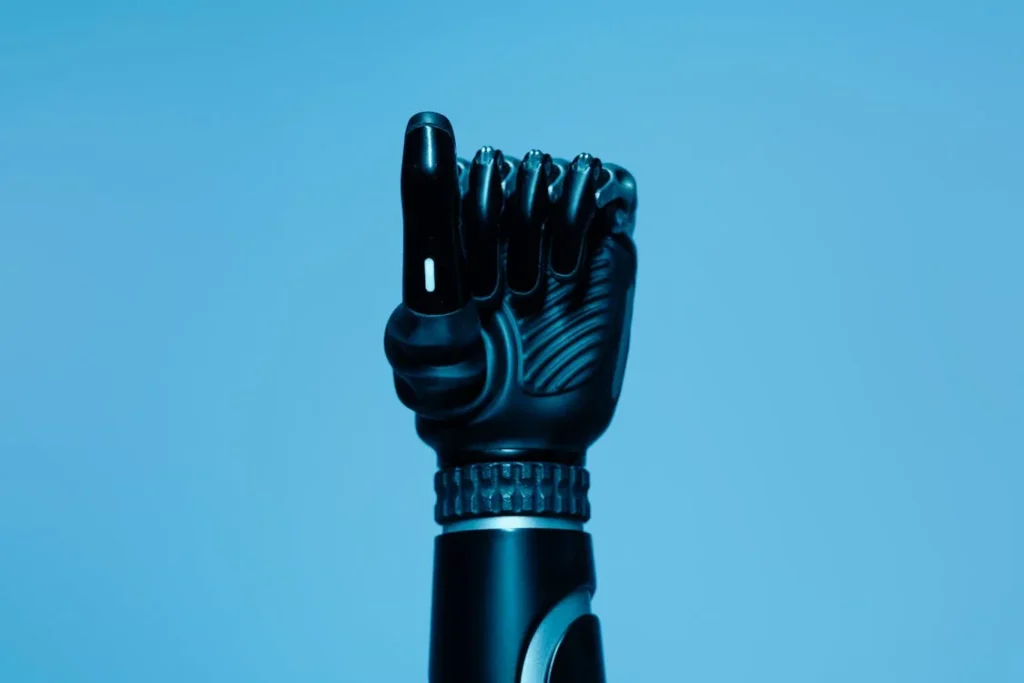
Myth #3: “Children Shouldn’t Be Fitted With a Prosthesis Until They’re Older”
Why This Belief Can Hold Kids Back
Many parents worry that fitting their child with a prosthesis too early might interfere with natural growth or cause discomfort. Some are told that young children won’t tolerate a prosthesis, or that they’ll simply “outgrow it too fast to be worth it.” Others fear their child won’t understand how to use it, and that the prosthesis will just end up sitting unused in a corner.
While these concerns come from a place of love and caution, they are based more on myth than fact. Waiting too long can actually create more challenges for the child—not fewer. Early fitting offers unique benefits that go far beyond physical movement. It supports emotional growth, mental development, and social confidence.
At Robobionics, we’ve worked with many families across India who were unsure at first—but amazed at the changes they saw once their child began using a prosthesis early. The difference is not just in what the child can do, but in how they begin to see themselves.
Children Learn Faster Than Adults
One of the most incredible things about children is how quickly they adapt. Their brains are designed to absorb, experiment, and grow from new experiences. This natural flexibility means they often pick up prosthetic use faster than adults—sometimes within days.
When a child is introduced to a prosthesis early, they grow up seeing it as a normal part of their body and their life. They’re not afraid of it. They don’t question it. It simply becomes part of how they reach, hold, balance, or play. There’s no emotional baggage. No long memory of life “before.”
In contrast, children who grow up without using a prosthesis may develop strong one-sided habits. They rely heavily on one limb for everything—eating, writing, dressing, playing. This can lead to posture issues, joint strain, and even difficulty switching to prosthetic use later. Their body has already learned to adapt without it, and unlearning that is often harder than starting fresh.
The Social and Emotional Advantages of Early Use
School is where children begin to form their self-image. They notice how they’re different from others. They compare. And sadly, they sometimes feel left out.
Children without a prosthesis often have to rely on teachers or classmates to help with activities like cutting paper, tying shoelaces, or opening lunchboxes. While most schools and peers are supportive, the constant need to ask for help can chip away at a child’s confidence. It can make them feel “less than,” even when they’re just as capable.
Introducing a prosthesis early changes this narrative. The child becomes more independent. They can take part in the same activities as their peers—with less help, and more pride. We’ve seen children beam with joy as they hold a paintbrush, catch a ball, or fasten their own backpack strap for the first time.
This kind of empowerment sticks. It shapes how they think about challenges—not as limits, but as things they can figure out with the right tools. That mindset is a gift they carry for life.
Prosthetic Adjustments Keep Pace With Growth
Another common worry is that children grow quickly, and their prosthesis will constantly need replacement. While it’s true that growth requires updates, it’s not as overwhelming—or expensive—as some think.
Modern pediatric prostheses are designed with growth in mind. At Robobionics, we offer modular designs that allow for easy resizing, adjustment, and upgrades. Sockets can be refitted. Liners can be swapped. Components can be reused. The goal is not to build a one-time device—but a flexible system that evolves with the child.
Most children don’t need a completely new prosthesis every few months. With proper care and monitoring, they can use their device comfortably for a year or more, depending on age and activity level. And during that time, the value they receive—in mobility, confidence, and participation—is worth far more than the investment.
It’s About Movement, Not Perfection
Some parents imagine prosthetics as devices that must look and function exactly like a real hand or leg. When they hear about early fitting, they picture something bulky or unnatural on their child. This image can be scary—and it’s not accurate.
Early prostheses for children focus on simple, helpful movement. The goal isn’t perfection. It’s participation. A lightweight, body-powered hand might help a child hold a toy. A soft, passive foot might help them balance while walking. These small wins make a big difference.
As the child grows, they can be introduced to more advanced technology—myoelectric hands, energy-storing feet, or smart joints. But the foundation starts early, with devices that encourage movement, coordination, and exploration.
Involving the Whole Family in the Journey
When a child starts using a prosthesis early, the entire family learns with them. Parents become more confident in helping with fitting, cleaning, and daily adjustments. Siblings learn how to play together without focusing on differences. And the child learns that their limb difference is just one part of who they are—not something that needs to be hidden or explained.
At Robobionics, we involve families in every step. We offer hands-on training, home care guidance, and emotional support. Because we know that early fitting isn’t just a medical step—it’s a family journey. And when everyone feels equipped and empowered, the child thrives.

Myth #4: “You’ll Become Too Dependent on the Prosthesis If You Start Using It Early”
Understanding Where This Myth Comes From
Some people believe that if you begin using a prosthesis soon after amputation, you might become overly reliant on it—that it could somehow “weaken” your natural abilities or make your body forget how to adapt without it. This fear is especially common among older adults or those who’ve learned to manage certain tasks using only one limb.
There’s also the concern that early dependence might cause frustration if the prosthesis is unavailable or breaks. Friends or family members sometimes suggest waiting to build natural strength and coping strategies first, and to “rely on your body” before introducing any device.
On the surface, this might sound logical. But when we look closer at how the body and brain work together—especially after a life-changing event like limb loss—the opposite is actually true. Early use of a prosthesis doesn’t lead to overdependence. It leads to confidence, strength, and balance.
Prosthetics Don’t Replace Ability—They Reinforce It
A well-fitted prosthesis doesn’t replace what a person can do. It supports it. When introduced early, a prosthesis becomes an additional tool that works in harmony with the body—not in place of it. It helps maintain posture, keep the muscles moving, and reduce uneven strain on the spine, shoulders, and hips.
Rather than limiting someone, early use expands what they’re capable of. It enables them to move more freely, complete tasks with less effort, and focus their energy on healing instead of always finding workarounds. Over time, the prosthesis becomes something they choose to use—not something they’re helpless without.
In fact, people who adopt their prosthesis early tend to use it more skillfully in the long run. They understand when it’s helpful, when to rest it, and how to adjust their movements naturally. They’re not dependent. They’re in control.
Independence Comes from Options, Not Limitations
True independence is not about doing everything alone. It’s about having options. It’s about choosing the best tool for the task. If someone needs to carry a heavy item, walk longer distances, or do fine motor tasks, why not use a device designed to make those actions easier?
We don’t consider people who use glasses to read as “dependent.” We say they’re making smart choices to improve their vision. The same logic applies to prosthetic use. When someone decides to use a device that helps them cook dinner, tie their shoes, or walk their dog without strain—that’s independence in action.
Early prosthesis fitting offers those options at the right time, before bad habits form or pain sets in from overuse. It puts people back in charge of their movement and their lifestyle.
Avoiding Overuse Injuries and Imbalances
When someone delays prosthetic use and tries to do everything with their remaining limb, the body compensates—but not always in healthy ways. Over time, this can cause shoulder pain, back issues, and even joint damage. The muscles on one side become overdeveloped, while the other side weakens.
This imbalance leads to long-term discomfort and can make everyday tasks harder. The body begins to “lean” toward one side, both physically and neurologically. This is especially common in upper-limb amputees, who tend to overuse their dominant hand for every action. Over months and years, this can affect balance, coordination, and joint health.
When a prosthesis is introduced early, it prevents this imbalance. It keeps both sides of the body engaged. It trains the brain to share the workload more evenly. That balance doesn’t just reduce injury—it improves fluidity in motion, posture, and overall body awareness.
Learning to Trust Your Body Again
After amputation, it’s common to lose trust in your body. You might feel unsure of your strength, nervous about pain, or afraid to try certain movements. This mental block slows down progress—sometimes more than physical issues.
Using a prosthesis early helps restore that trust. It allows the person to test movements in a supported way, guided by therapists or rehab specialists. They feel safe as they try walking again, carrying items, or practicing fine motor skills. These early wins help rebuild self-belief, one step at a time.
This trust is key to independence. Once someone feels in control of their body—and the tools they’re using—they begin to move with purpose again. They stop overthinking every step or gesture. They feel capable, confident, and comfortable.
Knowing When to Use the Prosthesis and When to Rest
Some people worry that if they use a prosthesis too early or too often, they’ll never be able to go without it. But in reality, early users learn when and how to take breaks. They get better at listening to their body, understanding fatigue, and pacing their activities.
This self-awareness is a powerful skill. It helps them manage their energy, avoid injury, and plan their day more effectively. They’re not glued to the device—they’re working with it. And that’s a sign of mastery, not dependence.
We often remind our users: your prosthesis is there when you need it—and you’re free to rest it when you don’t. That choice is what early fitting empowers.
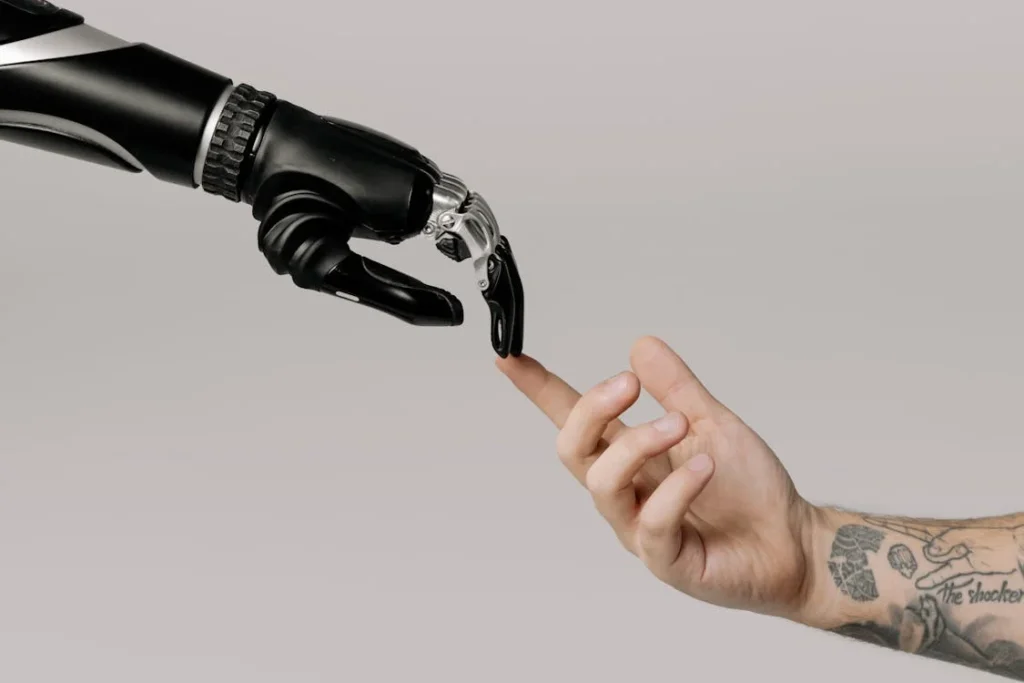
Myth #5: “Early Prosthesis Fitting Isn’t Necessary If You’re Not Very Active”
Why This Idea Stops People From Getting the Help They Deserve
There’s a quiet assumption in many conversations around prosthetics: if you’re not a young athlete or someone constantly on the move, maybe a prosthesis isn’t for you—at least not right away. This idea is common among older adults, people who have retired, or those who live a more relaxed lifestyle. They’re often told, or they come to believe, that early fitting isn’t urgent because they “don’t need it that much.”
The problem is, this thinking ties the value of a prosthesis solely to physical activity. It overlooks the dozens of little movements and choices that shape our daily lives—even when we’re not running marathons or climbing stairs.
At Robobionics, we’ve seen how early prosthesis fitting benefits people of all ages, activity levels, and lifestyles. Whether someone enjoys gardening, reading, walking their pet, or simply making tea in the kitchen, having a prosthetic limb early on makes a meaningful difference.
Mobility Is Not About Speed—It’s About Freedom
Being “active” doesn’t always mean being physically intense. It means being able to move when you want to, how you want to, without depending on others. That’s what a prosthesis helps restore—even in the smallest ways.
Take someone who enjoys sitting in the park or doing light stretches in their home. Without a prosthesis, standing up from a chair or shifting weight can feel awkward or unsafe. Balance is affected. One side of the body works harder than the other. Even small daily movements start to feel exhausting.
Now, introduce an early prosthesis into that same person’s life. Suddenly, their balance improves. Their walk becomes steadier. They can lift a cup of tea, open a cabinet, or adjust a chair with ease. These may seem like minor wins—but they are the building blocks of independence.
Early fitting isn’t about pushing the body. It’s about supporting it—so that everyday movement becomes smooth again, instead of stressful.
Maintaining Health Without Overexertion
One of the biggest health risks after limb loss—especially in less active individuals—is inactivity. When the body doesn’t move, blood flow slows, joints stiffen, and muscles weaken. This can lead to further medical complications, like poor circulation, back pain, or even a decline in heart health.
Early prosthesis use keeps the body in motion, gently and safely. It encourages users to take more steps throughout the day, even if it’s just walking around the home or completing light chores. That small amount of movement adds up. It supports the cardiovascular system, keeps muscles engaged, and improves digestion, sleep, and overall wellness.
People who begin moving early—even with modest goals—report fewer hospital visits and faster recovery. They also tend to stay more connected with their routines, their families, and their communities.
So no, you don’t need to be “very active” to benefit from early fitting. You just need a desire to live more comfortably—and that’s true for everyone.
Staying Social Without Feeling Self-Conscious
Another important benefit of early fitting—especially for those who don’t get out much—is social confidence. After limb loss, people often isolate themselves. They worry about how others might look at them. They feel uncomfortable going out without a prosthesis, unsure of how they’ll be perceived.
This discomfort can lead to avoiding events, skipping meals with friends, or hesitating to run errands. Over time, that isolation can harm emotional health. It can lead to loneliness, sadness, and even depression.
But when someone receives a prosthesis early—even a simple one—they begin to feel “ready” again. They’re able to hold a glass, wave to a neighbor, or walk into a room without having to explain their condition. They regain the freedom to participate—not just physically, but emotionally too.
The ability to sit with others, share a meal, or enjoy conversation without feeling different or dependent has enormous value. And that’s something early fitting can offer, regardless of how active a person is.
Reducing the Burden on Caregivers
People who consider themselves “not very active” often rely more on caregivers for help. This can include a spouse, adult child, or paid support. While support is a wonderful thing, it can also create emotional tension. The person receiving care may feel guilty or frustrated. The caregiver may feel stressed or tired.
Early prosthesis use can relieve this pressure. It allows the person to regain control over routine tasks—bathing, dressing, reaching for items, eating. Even reducing the need for help a few times a day can make a huge difference in how both people feel.
We’ve had caregivers tell us they finally felt comfortable leaving the house again for a few hours because their loved one could now manage simple tasks alone. That freedom, on both sides, is life-changing.
Prosthetic Use Can Be Gradual and Gentle
Finally, it’s worth saying: early fitting doesn’t mean jumping straight into full use. It’s a gentle process. The prosthesis is introduced slowly, starting with short periods each day. There’s no pressure to do everything all at once.
For those with limited energy or mobility, this slow pace works well. It allows the body to adjust, the skin to adapt, and the person to build trust in the device. There are no strict rules—just support, patience, and guidance.
Even an hour a day of early prosthesis use can have long-term benefits. It keeps the brain engaged, the body active, and the spirit hopeful.
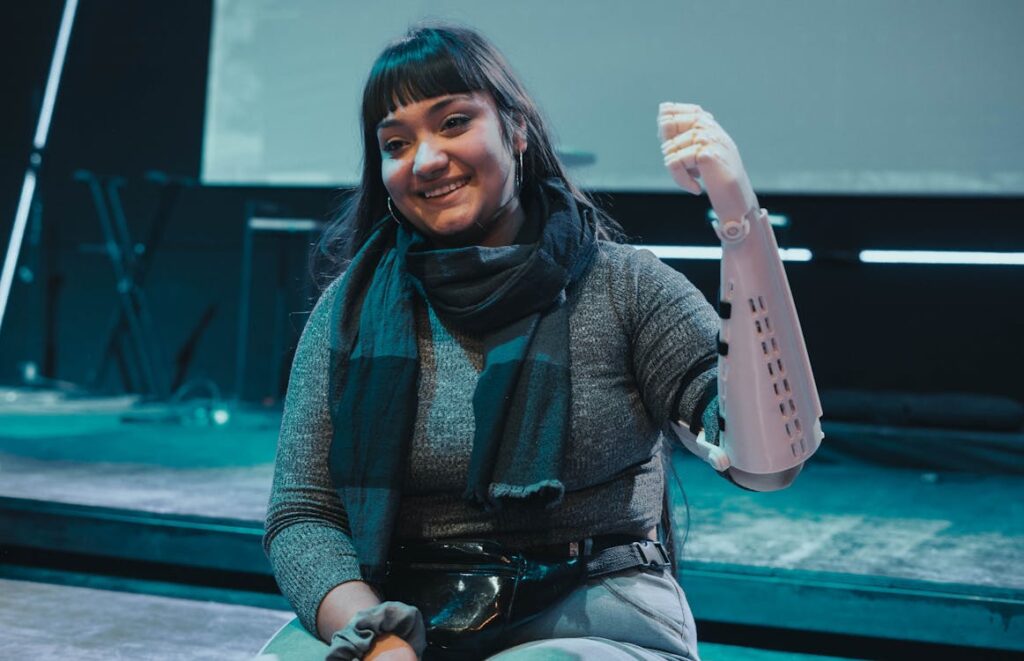
The Bottom Line: Early Prosthesis Fitting Isn’t Just About the Limb—It’s About Your Life
Why Starting Sooner Makes Everything Else Easier
What we’ve learned over years of working closely with amputees across India is simple: early fitting of a prosthesis makes recovery smoother, faster, and more complete. It’s not about rushing or skipping healing—it’s about moving forward with support, care, and the right technology at the right time.
Early prosthetic use protects the muscles, keeps joints flexible, and trains the brain to accept the new limb as part of the body. It prevents bad habits from forming and stops the body from overcompensating in harmful ways. It lays the foundation for balance—not just physical, but emotional too.
Most importantly, it restores confidence. It gives people back the ability to choose, to move freely, and to rejoin their routines without hesitation. Whether it’s walking independently, preparing food, going back to work, or simply stepping outside without fear—these are the real victories that early fitting makes possible.
From children taking their first steps, to adults returning to the office, to seniors regaining control at home—early prosthesis fitting is about empowerment. It helps people live, not just recover.
Conclusion
The myths surrounding early prosthesis fitting have held many people back for far too long. But the truth is clear: early fitting is safe, practical, and life-changing. It supports healing, speeds up rehabilitation, and unlocks possibilities that waiting only delays.
At Robobionics, we believe in starting when the body is ready—and the heart is too. We don’t just build prosthetics. We build progress. And that progress begins earlier than most people think.
Because the sooner you begin, the sooner life begins again.



